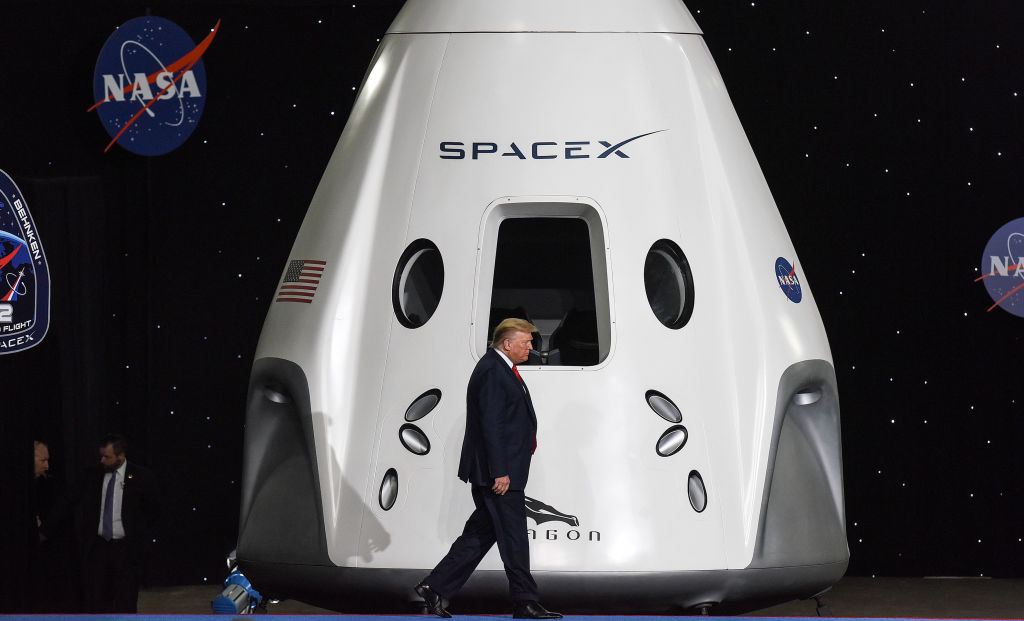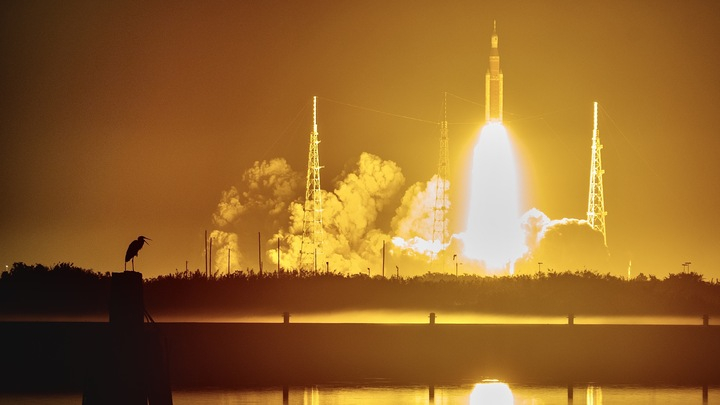What a 2nd Trump administration could mean for NASA and space exploration
"It's not unreasonable to think that there could be either money or regulatory regime lifted to benefit the pace of Starship development."

President-elect Donald Trump's return to the White House next January will likely bring big changes to NASA's Artemis program and a renewed sense of urgency to land a crew on the moon, in part to keep up with China's ambitions for a moon landing by 2030.
Space policy experts said they also expect Elon Musk, Trump's wealthiest supporter, to soon enjoy a far friendlier regulatory environment that would benefit his six companies, including SpaceX and its Starlink satellite network. The New York Times reported last week that Musk has already asked Trump to hire employees from SpaceX as top government officials, including at the Defense Department, which is one of the company's biggest customers.
Among other benefits, such a move could position Musk to more directly weigh in on regulatory issues regarding Starship, a transformative reusable rocket that's being developed by SpaceX to transport people and cargo to the moon and Mars. Musk has repeatedly expressed frustration with the regulatory environment that SpaceX and other launch providers must navigate, including that Starship's most recent test flight was grounded by the Federal Aviation Administration (FAA) for weeks for what the rocket company called a "superfluous environmental analysis."
"It's not unreasonable to think that there could be either money or regulatory regime lifted to benefit the pace of Starship development," Casey Dreier, who is the chief of space policy at The Planetary Society, told Space.com. The extent to which regulations surrounding Starship are relaxed as well as the direction of the U.S. space policy will ultimately depend upon "where Elon Musk will fall in terms of his influence within the Trump White House — it's hard to extrapolate that."
Related: Trump signs Space Policy Directive-5 on space cybersecurity
Trump's first term, from 2017 to 2021, notably included initiation of the Artemis program to return humans to the moon for the first time since the Apollo era, championed by Vice President Mike Pence as the chair of the National Space Council and space policy expert Scott Pace as executive secretary. Trump himself spearheaded the establishment of the U.S. Space Force, the first new military service created since 1947, which he claimed as one of his proudest accomplishments of his first term in office.
If re-elected, Trump has said he would strengthen U.S. military defenses in space by creating a Space National Guard, an idea that lawmakers in Congress have been proposing since 2021 but has yet to receive enough support to pass.
Breaking space news, the latest updates on rocket launches, skywatching events and more!
"Space was an area of policy stability during the first Trump administration," John Logsdon, who established the Space Policy Institute at George Washington University, told SpacePolicyOnline. "With Elon Musk likely in a position of influence, that is not likely to be the case this time around."
In recent months, Musk has vowed to identify $2 trillion in savings from the federal budget as the head of a new government efficiency commission, which he said will ensure taxpayer money "is spent in a good way."
A rich source of opportunity for cost-cutting — and a conflict of interest for Musk — could be NASA's massive Space Launch System (SLS), the centerpiece of the Artemis program that debuted in 2022 when it launched the uncrewed Artemis 1 flyby mission of the moon.

The megarocket, which isn't reusable and can launch only once every two years, costs roughly $4.1 billion per launch — quadruple initial estimates — making it effectively unaffordable for future Artemis missions. Meanwhile the program's Orion crew capsule has faced issues with its heat shield that a recent audit determined threatens safety of the crew, and with it, the timeline of NASA's goal to land humans on the moon in September 2026.
And with SpaceX on track to lower the cost of a single Starship flight to less than $10 million, SLS and the broader architecture of the Artemis program is deemed to get a hard look even as NASA Associate Administrator Jim Free urged the incoming administration to maintain the current plans. Historically, SLS and Orion development has received substantial funding from a broad coalition; the program supports more than 69,000 jobs nationwide as of 2019.
If Musk intends to halt SLS development, he will likely be contending with internal political support from Republican congressional representatives in red states like Alabama, home to NASA's Marshall Space Flight Center where large parts of SLS are being developed, as well as in Florida and Texas.
The new administration's driving force for changes to the Artemis program will be to maintain U.S. leadership in space, particularly to counter China's space ambitions, Dreier said. China's space program has developed rapidly in recent years to now include its own version of Starship. It aims to land astronauts on the moon by 2030 and build a crewed research outpost on the moon in the next decade in partnership with Russia.
While the U.S. hopes to accomplish both milestones sooner with its own set of partner countries, the Trump administration will likely find focusing on space policy harder than it did in 2016 due to other pressing issues it has vowed to address, including inflation and border issues in the U.S. and the ongoing wars in Ukraine, Gaza and Lebanon.
China has also moved up its timeline for bringing samples on Mars to Earth, perhaps as soon as 2031, which would be well before the joint NASA-European Space Agency Mars Sample Return (MSR) program does so. The MSR program, which has an entirely independent launch and landing architecture to Artemis, is in the midst of a major overhaul after being plagued by skyrocketing costs and schedule overruns. SpaceX is one of the seven companies that submitted a proposal to NASA outlining a simpler mission plan using Starship.
As Ars Technica reported earlier, it makes little sense to spend billions of dollars on an independent robotic sample return mission when astronauts can bring the samples inside Starship.
"I see a very dim future right now for MSR as an independent project managed by NASA," Dreier told Space.com. A logical, perhaps cost-effective alternative may be for Musk to somehow include Starship into the MSR program, a move that would help him advance his lifelong goal of helping humanity settle Mars.
Earth science missions at NASA are especially likely to fall under fresh scrutiny, given the first Trump administration repeatedly tried to cancel them, SpacePolicyOnline reported.
The agency itself isn't speaking up yet about what a second Trump term could mean for NASA, as far too many unknowns remain. A spokeswoman for NASA told Reuters on Friday (Nov. 8) that it "wouldn't be appropriate to speculate on any changes with the new administration."
Other experts worry the new administration may not tighten regulations enough for private space companies regarding the deployment of satellite megaconstellations in low-Earth orbit, which is already congested with satellites and hazardous space junk.
Related: Astronomers urge FCC to halt satellite megaconstellation launches
"One concern I have is that U.S. space policy will continue to evolve to enable, even more so, the rapid occupation of Earth orbits without adequately accounting for the risks — operational, environmental, and security — associated with that growth," Aaron C. Boley, who studies orbital debris as co-director of the Outer Space Institute, told Space.com via email.
There is also a looming uncertainty about how NASA will position itself in the coming years. The space agency has notably been a non-partisan entity over the years of changing administrations and conflicting priorities.
With Musk's growing influences over the federal government, however, "the idea of sending humans to Mars could start to be itself seen as a conservative or right wing value," said Dreier, "which, even though there's no inherent reason why it should be, would induce a knee jerk rejection by the opposite party because it will be seen as a defining aspect of the right wing."
The responsibility of overseeing NASA's programs and steering its position will largely fall on the shoulders of who Trump will nominate to lead the space agency. Meanwhile the National Space Council, which oversees national security, civil space, and commercial space, will by law be chaired by Vice President-elect JD Vance.

Sharmila Kuthunur is an independent space journalist based in Bengaluru, India. Her work has also appeared in Scientific American, Science, Astronomy and Live Science, among other publications. She holds a master's degree in journalism from Northeastern University in Boston.
